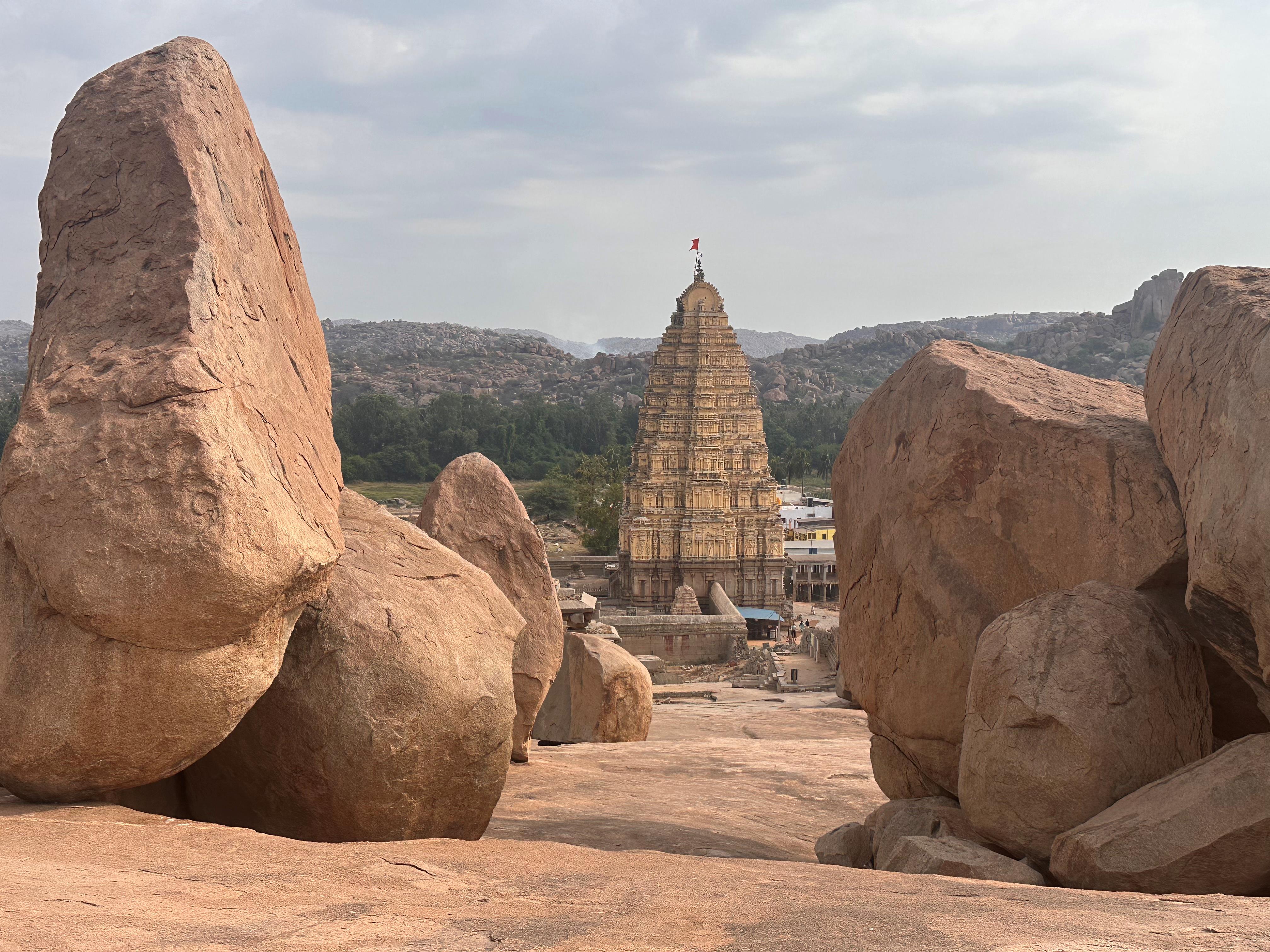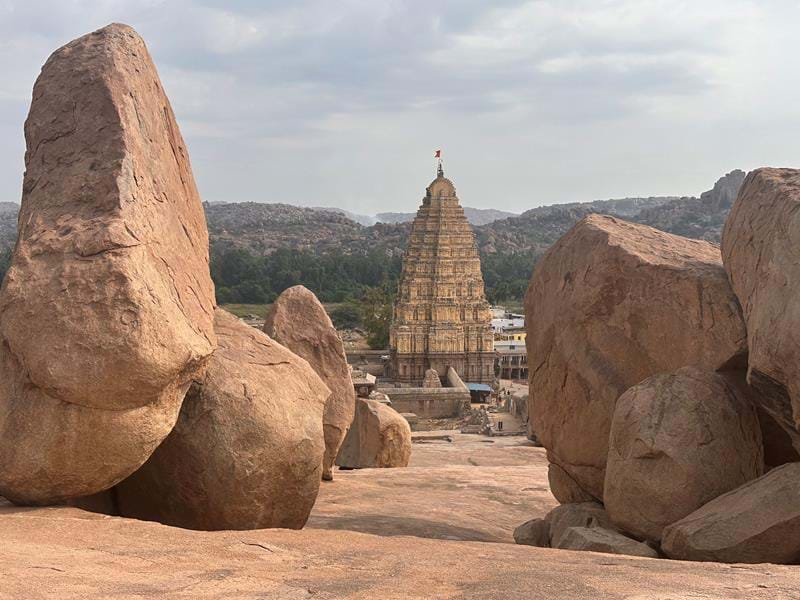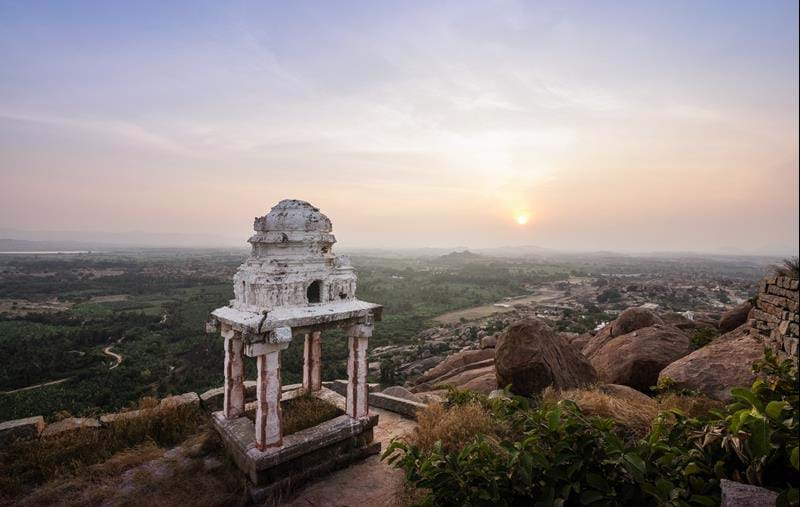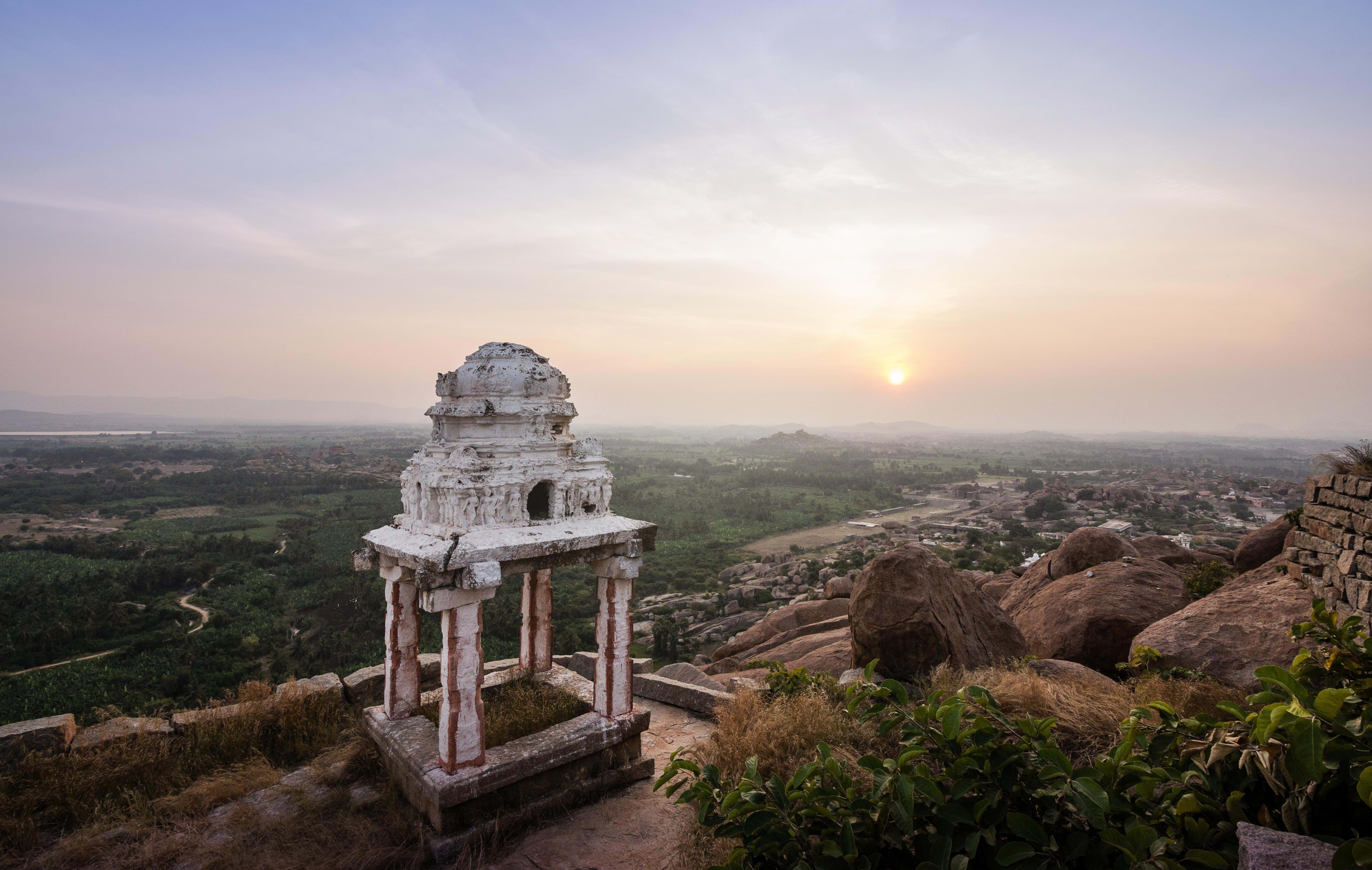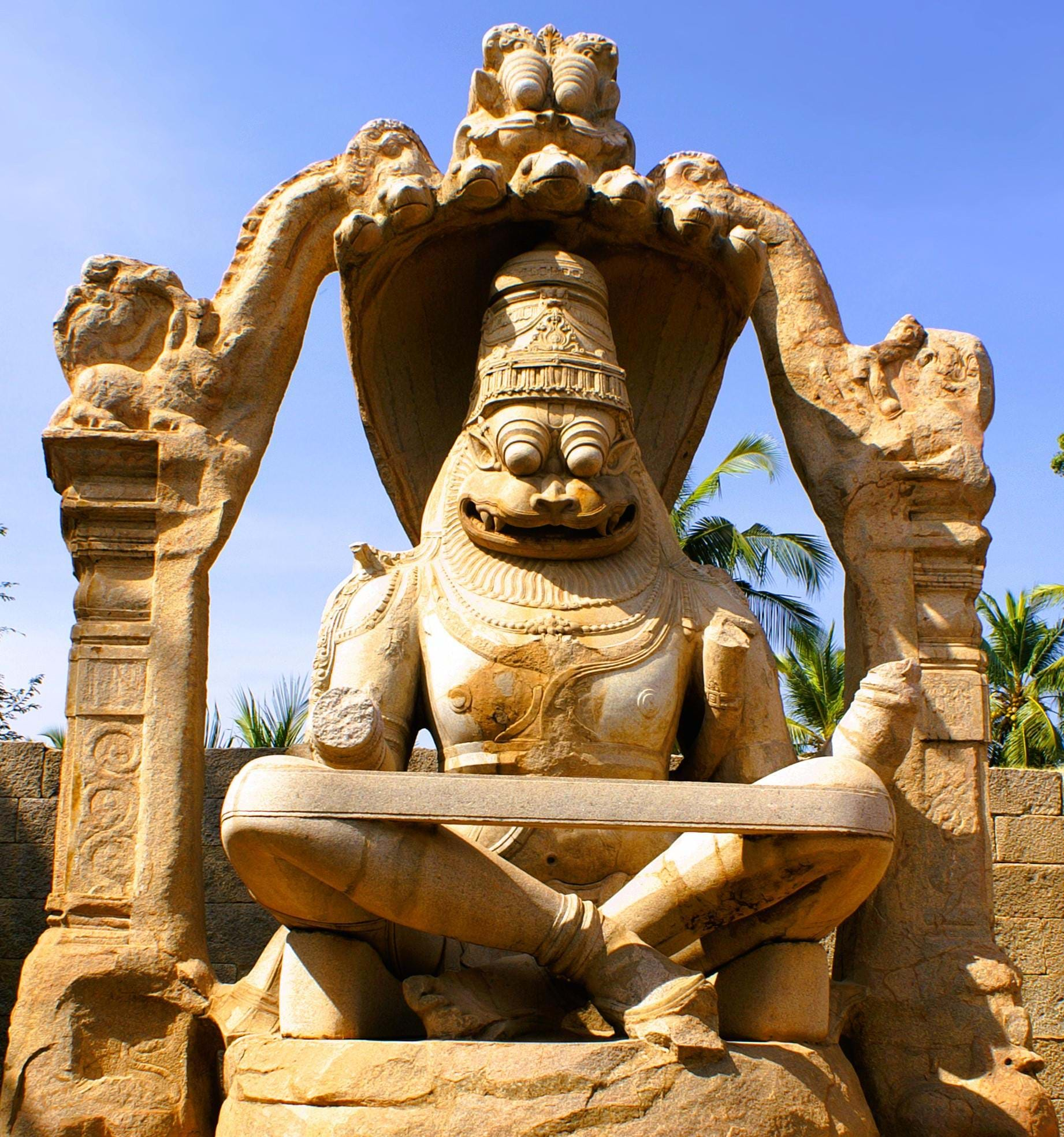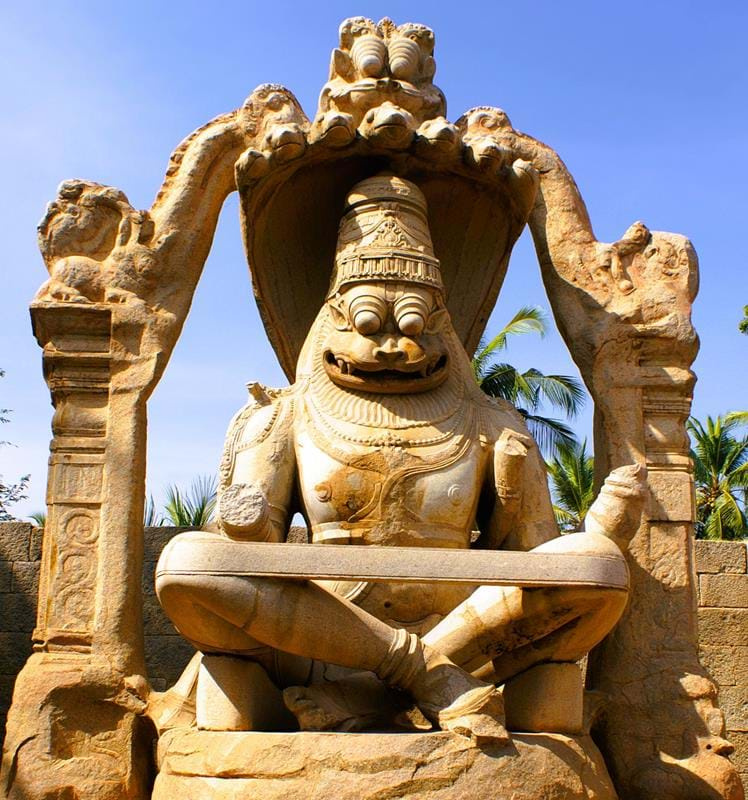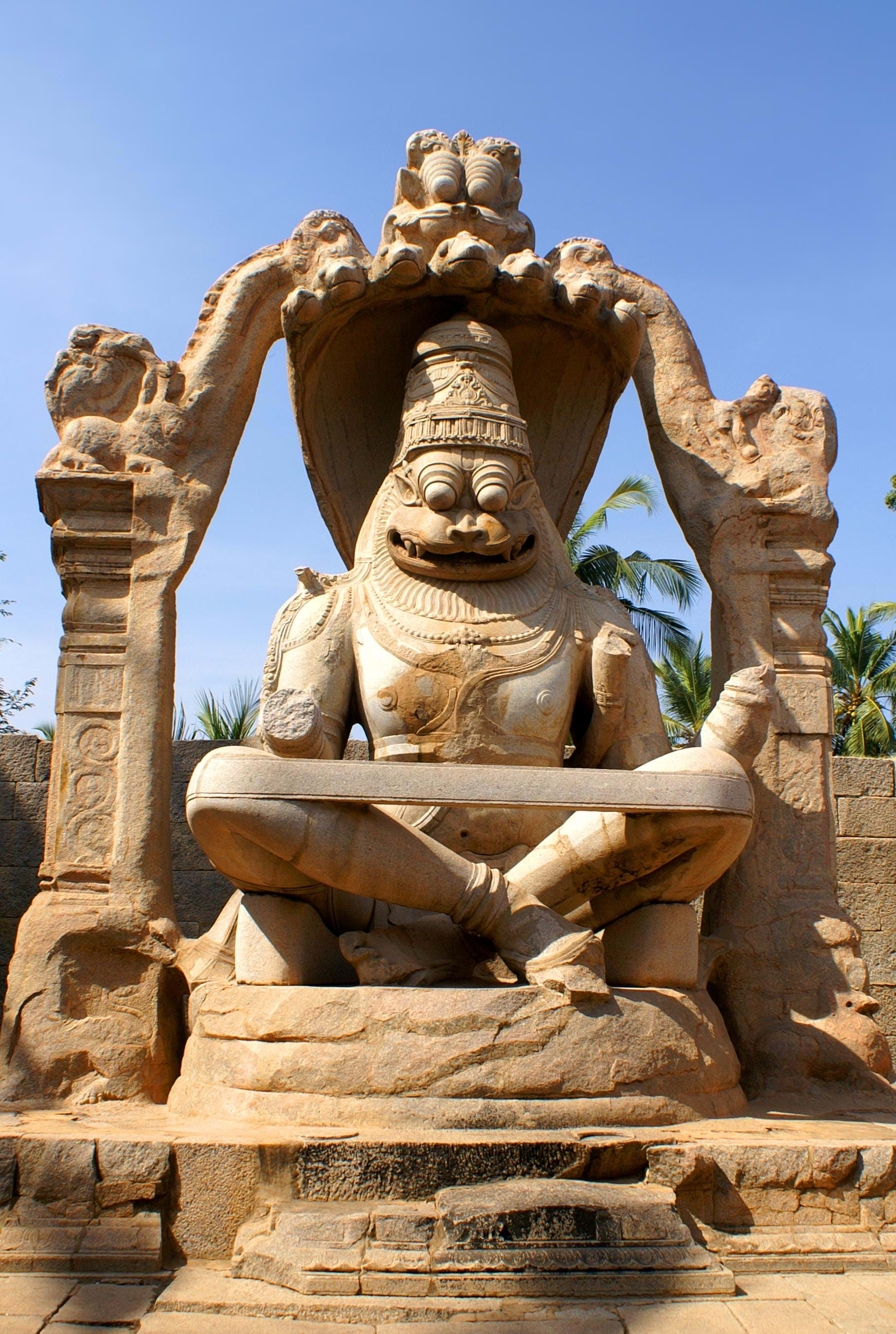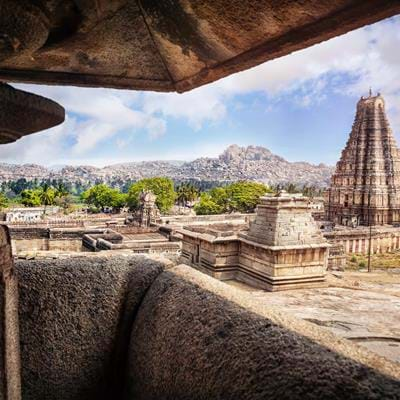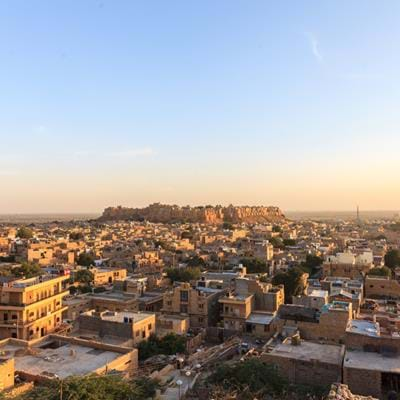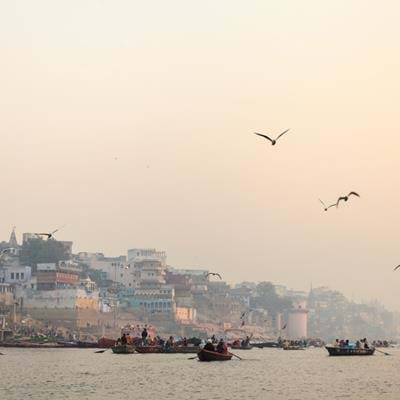India 06.05.2023 Updated: Amrit Singh
It’s hard to describe Hampi's unique, surreal, boulder-strewn landscape to someone who's not seen it with their own eyes. Local folklore believes it is the work of the Monkey God, Hanuman, who was born in Kishkinda close by. When Lord Rama arrived in Kishkinda in search of Rama's wife, who had been abducted, Hanuman vowed to help and collected giant boulders from all over India to build a bridge from Hampi to Lanka, where Sita was held captive. His work concluded successfully; the boulders remain as a reminder. Indeed, if you stand at sunset on any of the viewpoints and gaze down at the green rice paddies intersected with giant rock boulders, it seems that there’s something a little out of the ordinary going on in Hampi.
Hampi sits wedged between Goa, and Kerela, on the banks of the Tungabhadra River and is now very well connected by road and air. Explorations of its age-old temples steeped in spirituality and magical ruins of once-elaborate palaces and halls of the great Vijayanagar Empire strewn across many acres blend easily with the laid-back pace of this small town, making it worth the visit. The town is recognised as a UNESCO World Heritage Site if you need more convincing.
One could spend a lifetime here and learn something new each day, but for those on a short visit, here are some of its main sites...
Talk to our specialist team about tours and private journeys to the region.
Visit the Virupaksha Temple
The most striking site in Hampi is the towering Virupaksha Temple, the region's only working temple. At almost 50m high, the main gopuram is beautifully carved and can be spotted from all over Hampi. It has been a place of worship since the 7th century, and even today, you’ll find pilgrims and followers of Shiva from all over India visiting the sacred site.
Lakshmi, a temple elephant, wanders through the temple to bless devotees as they enter for prayers and visits. Large families of cheeky monkeys also grace the temples, stealing whatever offerings they can get from line after line of pilgrims awaiting their turn to enter the busy sanctums of the numerous shrines. While you're here, remember to climb the steps to the rocky boulders behind the temple, where you can gaze upon a gorgeous view of the Virupaksha Temple and the surrounding landscapes of Hampi.
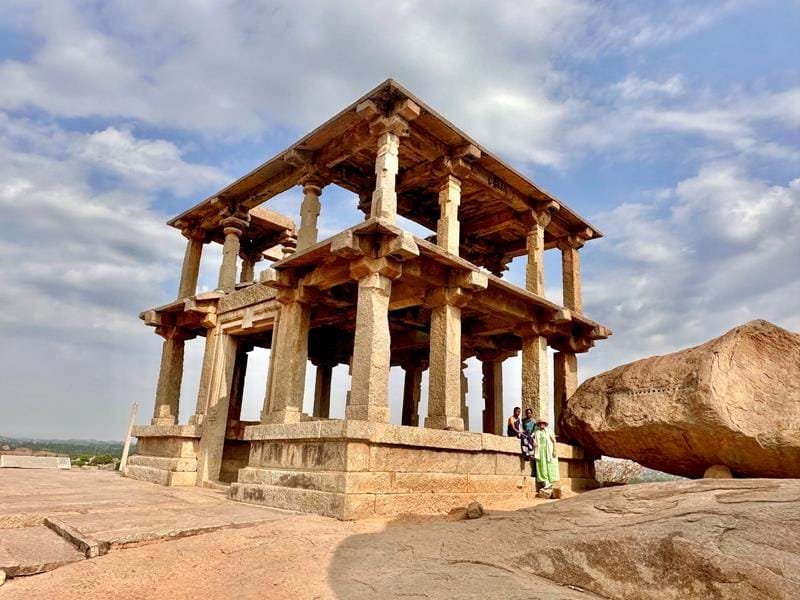
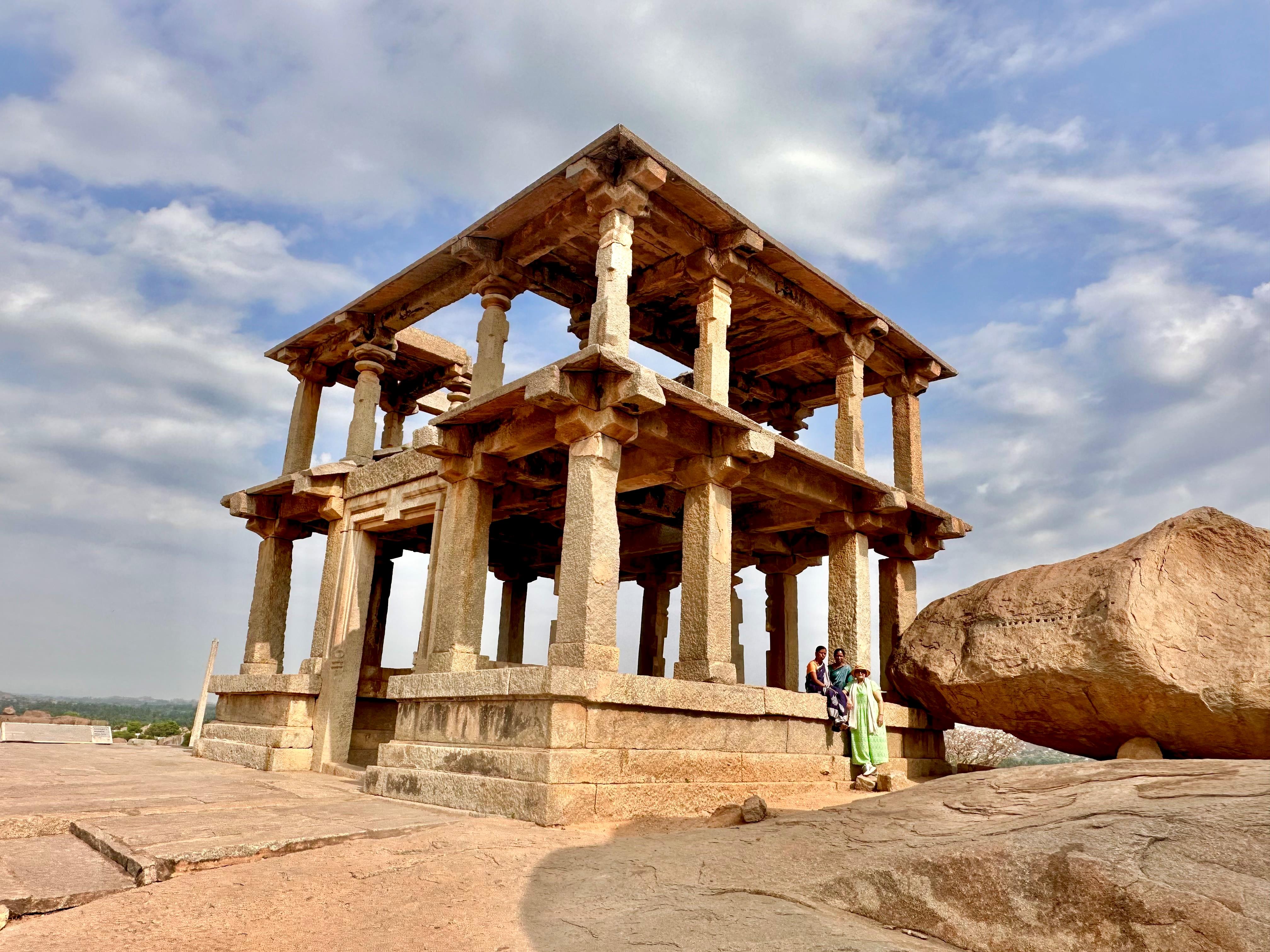
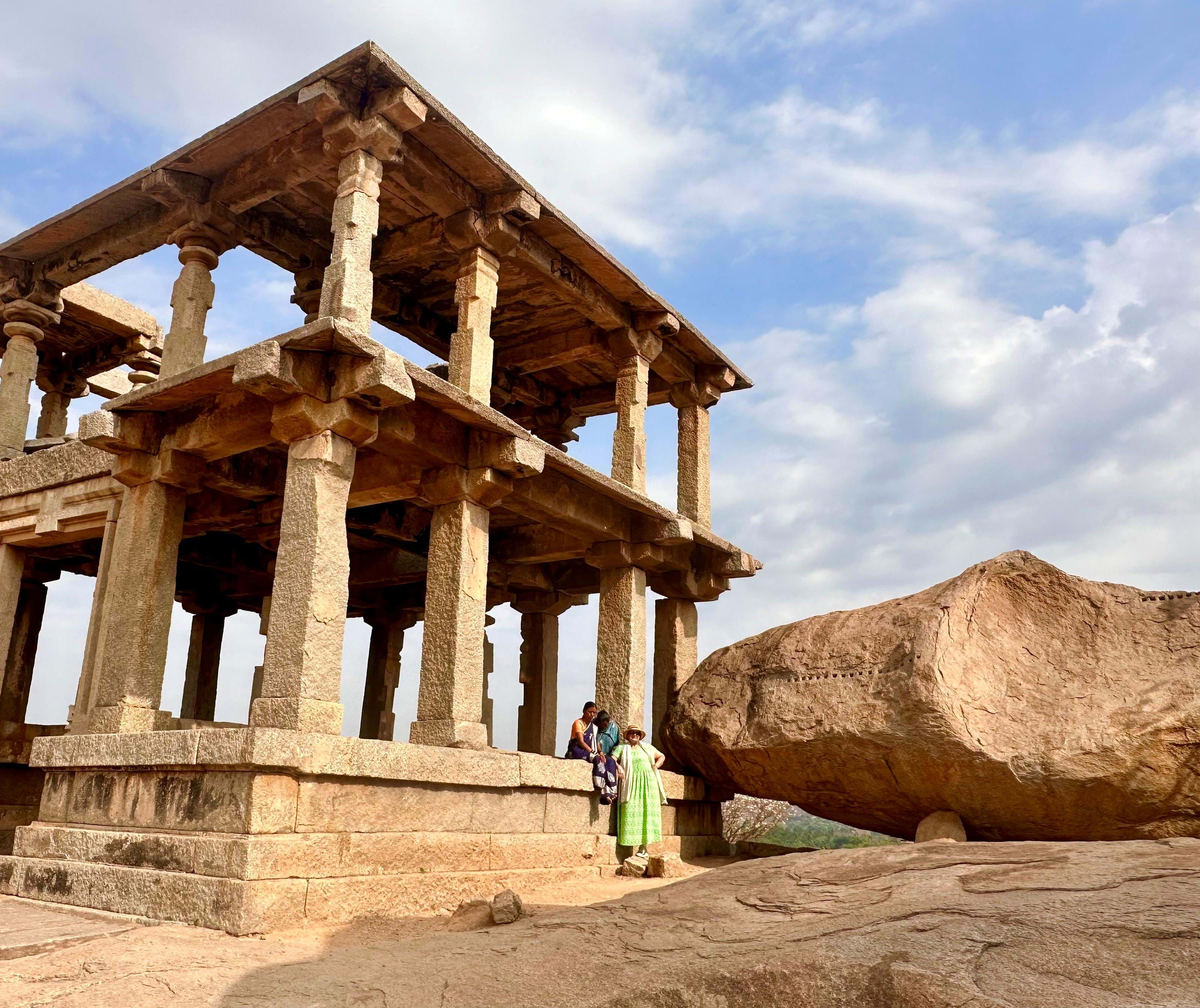 Be awed by the Mahanavami-diiba
Be awed by the Mahanavami-diiba
The Mahanavami-diiba is a 12m-high, three-tiered platform with intricate carvings and panoramic vistas of the walled complex of ruined temples, stepped tanks and the king’s audience hall. The platform was used as a royal viewing area for festivities, allowing the Vijayanagar royals (and visiting nobility from other regions) to preside over military parades, sporting contests and musical performances in a show of power, tradition and celebration.
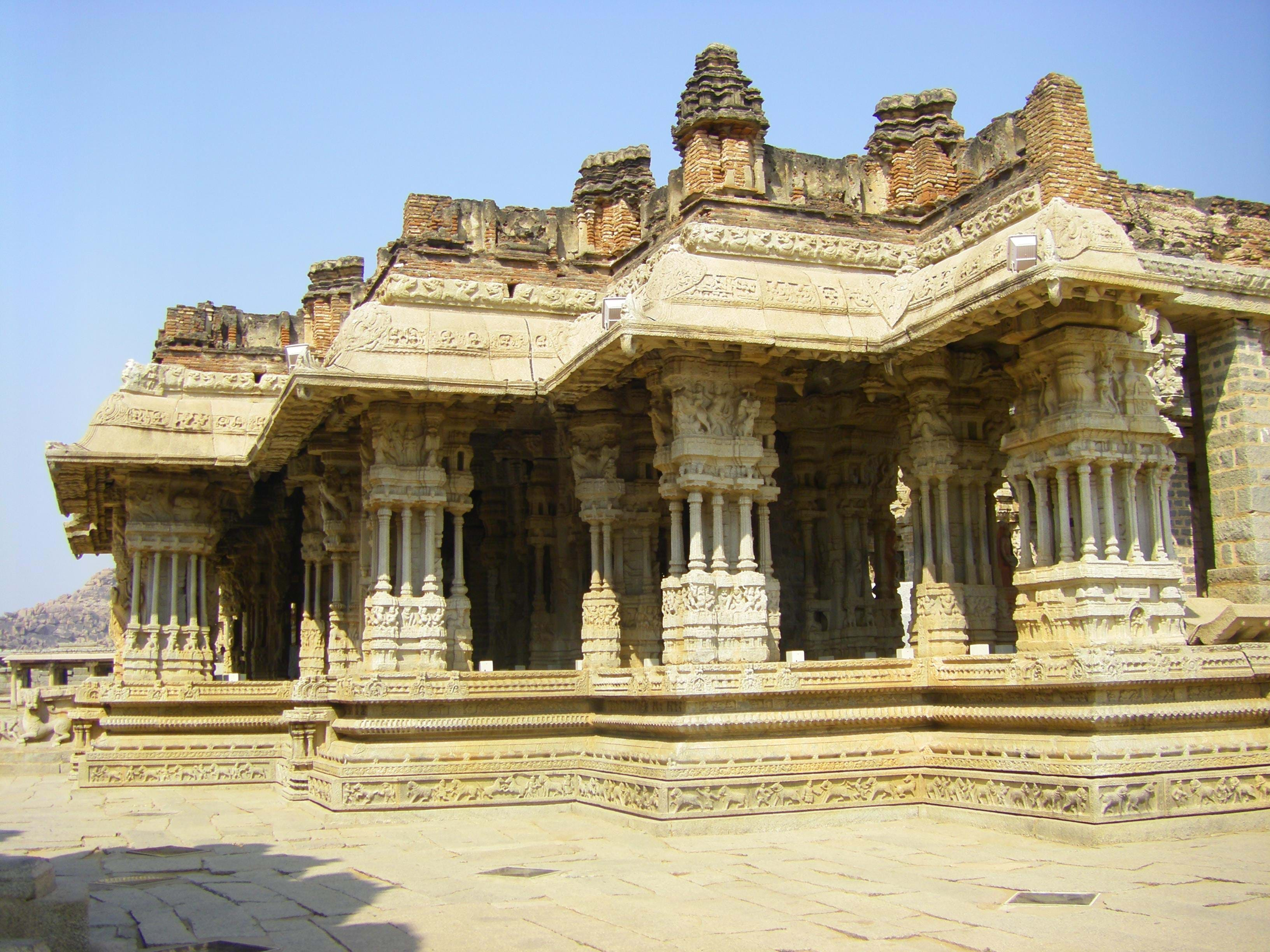
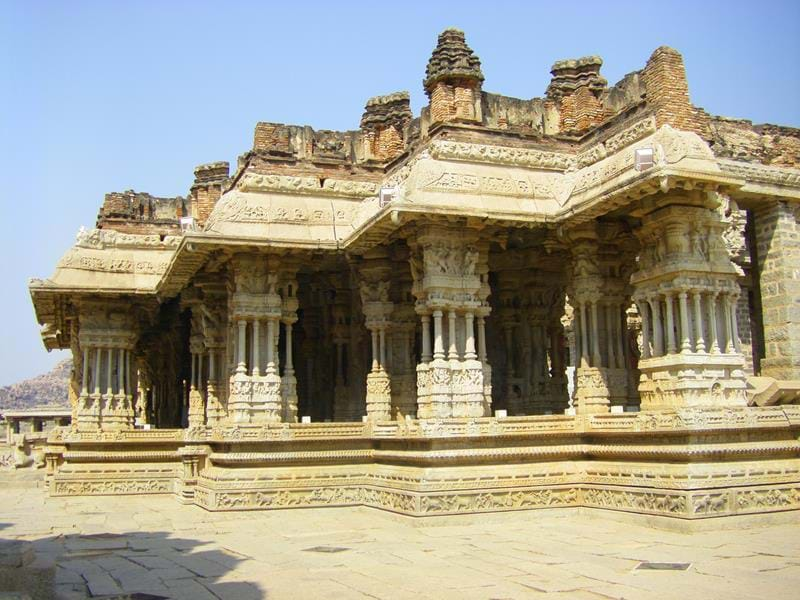
Visit the ruins of the Vittala Temple and its surroundings.
Hampi's most extensive and exquisite temple structure stands a short distance outside the city limits. Work on this started late in the later years of the empire, and although it was never finished or consecrated, its incredible sculptural work remains the pinnacle of Vijayanagar art. Dedicated to Lord Shiv, the temple's central courtyard holds an ornately carved chariot in stone whose wheels are said to have been capable of turning. Of even greater fascination is the 'Ranga Mantapa', an open pavilion for dance and music recitals. Its 56 musical pillars hold up the pavilion, producing mesmerising musical notes when tapped. Each pillar is finely tuned to play one of the seven notes in the Indian classical music scale.
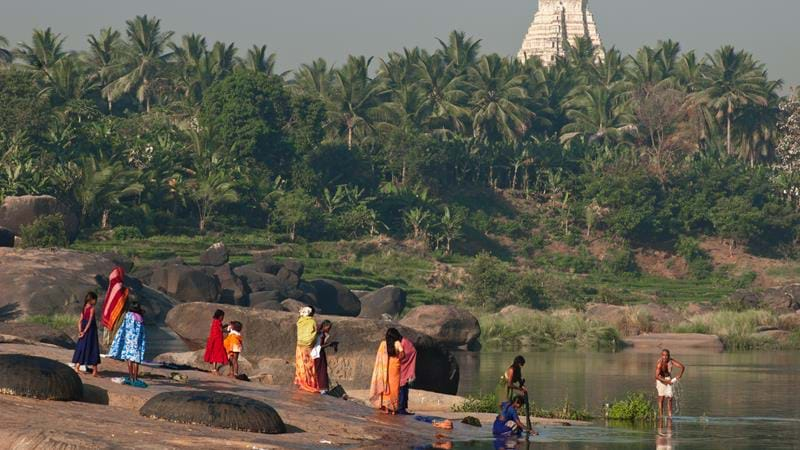
Ferry across the Tungabadra to Virupapura Gaddle
You can take a small boat across the Tungabhadra River to Virupapura Gaddle, known as Hippie Island. It seems a number of backpackers got a little lost here and stayed much longer than planned! It’s a beautiful little retreat with rice paddies, rows of small restaurants and a few handicraft shops, and several places where you can enjoy a delicious lunch and admire the sunset from the banks of the river.
Enjoy the sunset on Hemkuta Hill
To the south of Virupaksha and overlooking it sits Hemkuta Hill with a scattering of early ruins, which are worth the walk up, as is the view. It is thought the maiden Parvati, the daughter of Lord Brahma, saw and fell in love with Adiyogi, the first-ever yogi, Lord Shiva, as he meditated on the banks of the Tungabadra and resolved to marry him. Failing to awaken him from his decades-long meditation herself, Parvati took penance on Hemkuta hill and sought the help of Lord Indira, the god of thunder, lightning, storms and rivers.
Indira eventually granted her wish, but only when she attained spirituality. Indira then sent Kamadeva, the god of attraction, desire and erotic love to Parvati's aid.
They are said to have been married here, with a celebratory shower of gold from the heavens.
Admire Lakshimi Narasmiha
One of my favourites is the 6.7m high monolithic carved statue of Lakshimi Narasimha, the half-man, half-lion incarnation of Lord Vishnu, sitting cross-legged in a lotus position with a formation of seven snakes sheltering him from above. A carving of the Goddess Lakshmi, his consort, once sat on his left knee but has been destroyed.
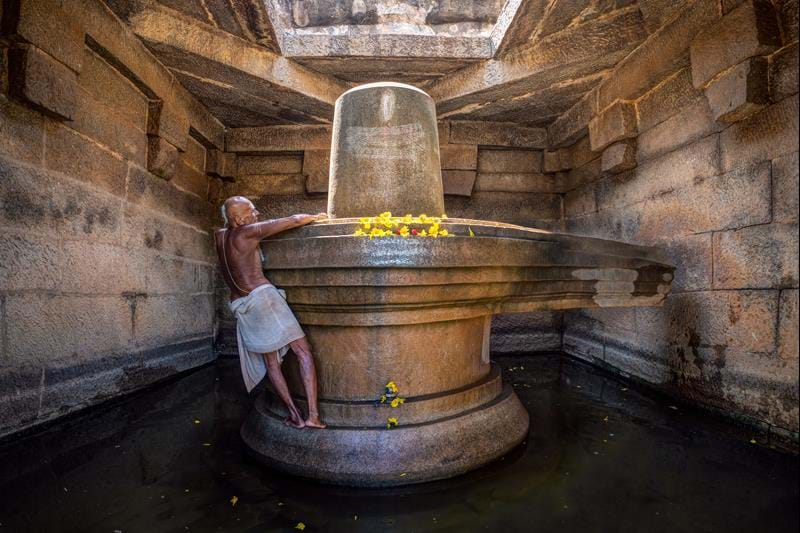
Experience the Krishna Temple
Adjacent to the Lakshimi Narasimha sits the second of the two living temples in Hampi, the Krishna temple, where a giant stone Lingam stone is partially submerged in water. Built in 1513, the temple is fronted by an apsara (celestial nymph) and ten incarnations of Vishnu. The priest here speaks excellent English and enjoys a good chat!
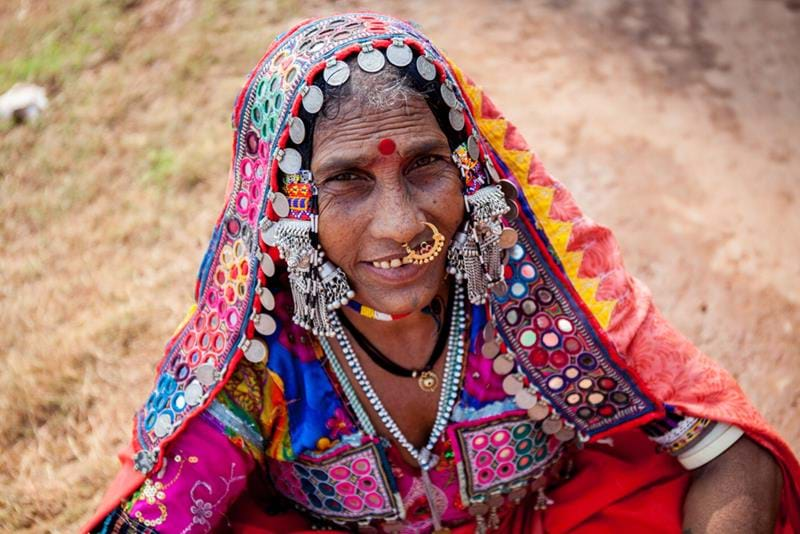
Purchase some authentic Karnataka Handicrafts
Each state in India has unique handicraft traditions; in Hampi, you’ll find beautiful embroidery and Sandalwood carvings. The bazaar’s in Hampi are an ideal place to pick up authentic crafts, as most stalls sell products made in the small villages in the Karnataka countryside. Women of the region wear some of the most unique clothing in India, and you can purchase a piece of their craft for your home.
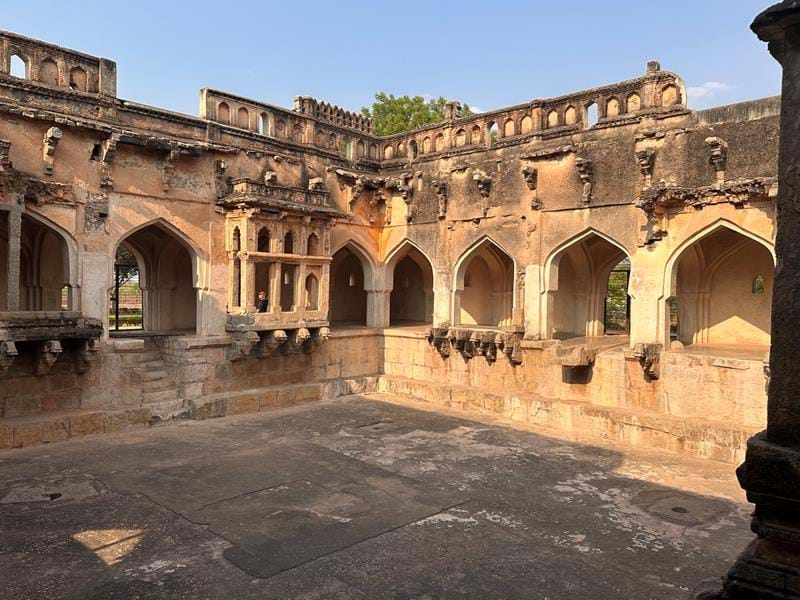
Relax at the Queen’s Bath
South of the Royal Centre, you’ll find various temples and elaborate waterworks, including the Queen’s Bath, deceptively plain on the outside but extraordinary within, even when drained of all its water.
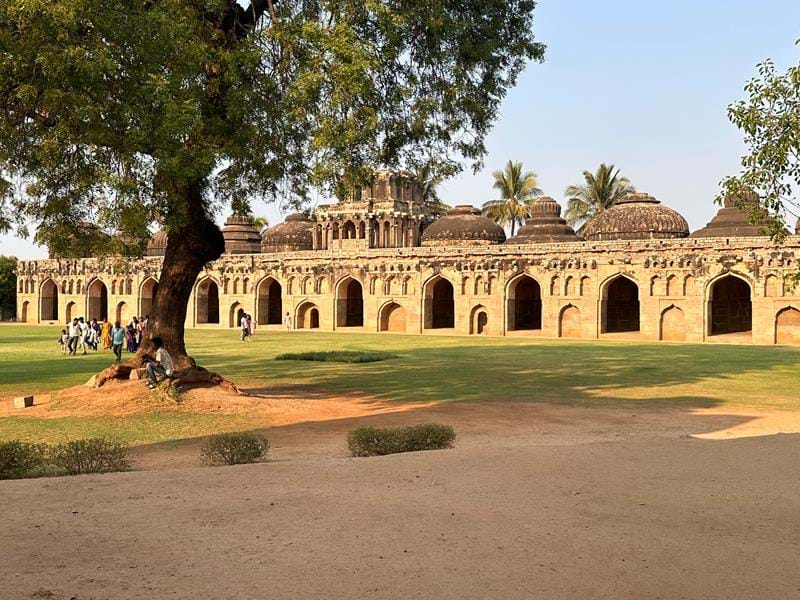
Marvel at the Elephant Stables and Parade grounds
This grand building with 11 domed chambers is where the state elephants once resided – each chamber has a small opening where mahouts (keepers) entered. The stables are accessed via the Zenana enclosure. There's a free sound-and-light show here at 7 pm, weather permitting.
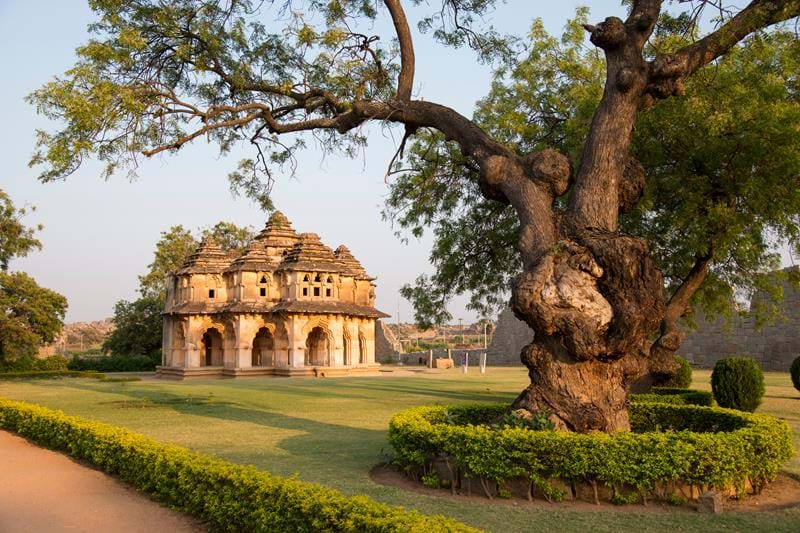
Imagine yourself at the Lotus Mahal
A pleasure pavilion for ladies of the royal household ladies, where they sang, danced and relaxed. Guarded by eunuchs, these grounds were completely off-limits to the men of the household, including the king.
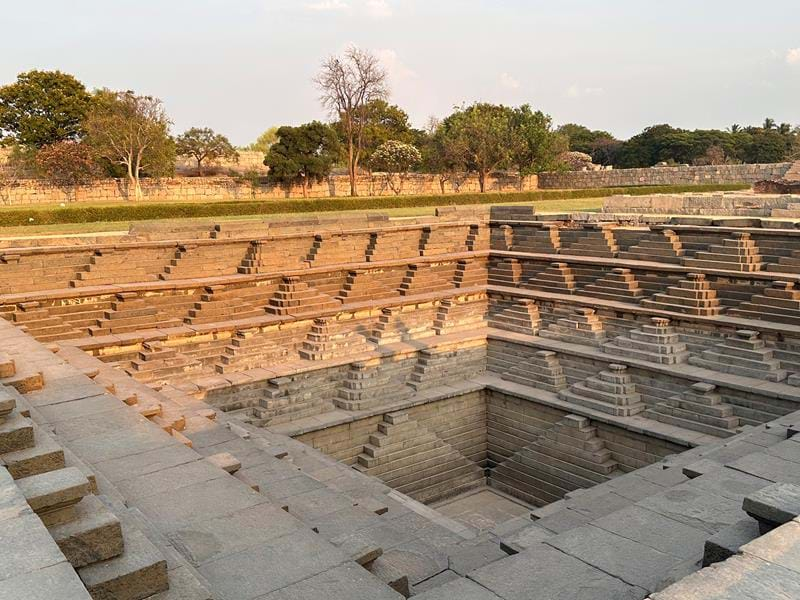
Wander into the Stepwells of the Royal Palace...
...When no one is looking! An incredible system of water-carrying systems and wells supplied the palace grounds with fresh water. The largest of the step-wells in Hampi are found on the grounds of the King's Palace.
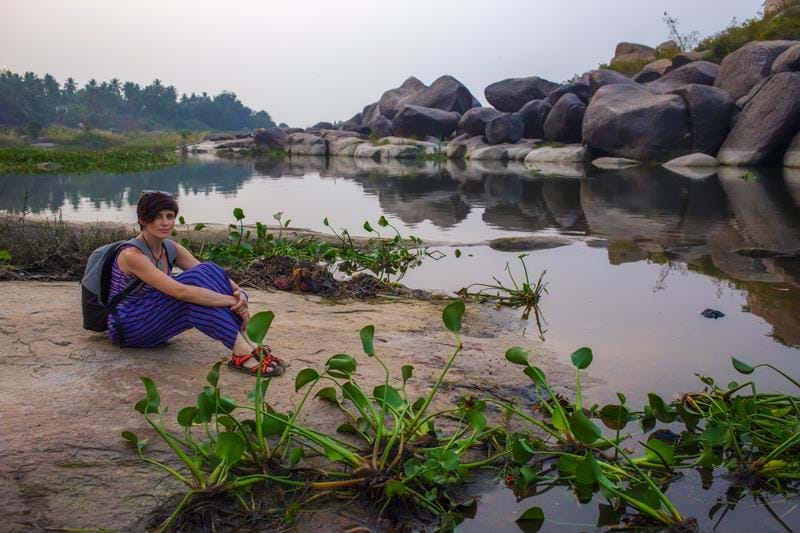
Finally, take a boat to Sanapur Lake for a swim
Hampi may not be on the coast, but the beautiful and big Sanapur Lake makes swimming possible to cool off from the heat. Ask local boatmen to take you to a safe and private spot for swimming. Even if you don't fancy a dip, it's a relaxing trip on this vast, serene lake surrounded by Hampi's signature boulder landscapes.
